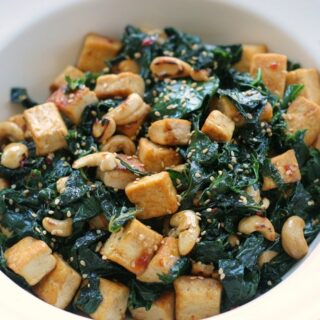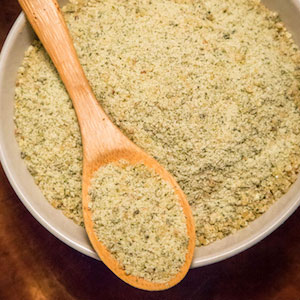A Great Place to Begin is at the Beginning!
You’ve decided to that 2018 is the year to get your Yoga On —Ok, great, once your head stops spinning from all the choices you’ve found. Don’t worries my budding little Yogi, you’re in the right place. I am here with your beginner’s guide to getting your yoga on!
Why is it called a Yoga Practice?
Your practice is a beautiful work-in-progress. Just because you can “do” certain poses doesn’t mean that you’ve “won.” This is why yoga is called a practice! It’s not a game or a sport. There are no expectations when you get on your mat. No rules that you have to follow or series that you have to finish.. Even if you don’t set out to technically “accomplish” anything, you’ve still gotten on your mat. You’ve still practiced. You’ve still won the prizes that truly matter: self-love & self-care.
Your practice is about the beautiful relationship between you & your mat & how the postures better you, both physically & mentally. When you come to your mat with an open mind, an open heart & a desire to do something nourishing for your body that day, you will. Which is, in it’s own way, a victory. there is no such thing as yoga perfect there is simply the practice.
Can Everybody do Yoga? – Yes! You don’t have to be bendy, skinny or be able to stand on your head. There are so many variations on every pose, every sequence, making yoga available to every body type at every fitness level. Come as you are and you will find that yoga practice will help you become more flexible. This newfound agility will be balanced by strength and better cardiovascular condition, as well as a sense overall well-being.
Is Yoga a Religion? – Yoga is not a religion. It is a philosophy that began in India nearly 5,000 years ago. Yoga sometimes interweaves other philosophies such as Hinduism or Buddhism, but it is not necessary to study those paths in order to practice or study yoga. It is also not necessary to surrender your own religious beliefs to practice yoga.
How often should I practice Yoga? – Even if you only practice for one hour a week, you will reap the benefits. Of course the more you practice, the more you will benefit. My suggestion is to begin with two classes a week, for at least one hour or more each time. Don’t let time constraints or impractical goals be a hurdle—do what you can and let the rest go. After a while, you will likely find yourself cravings your yoga practice. Let it grow organically. Soon it will become an essential part of your physical and emotional fitness well-being.
What about Eating 2–3 Hours before Class? – We get pretty twisty, turning upside down and bendy both forward and backward. If you have not fully digested your last meal, it will reintroduce itself to you in the most inconvenient ways. Perhaps you are a person with a quick digestive system and think you might get hungry during yoga class? You can experiment with a light snack such as yogurt, a handful of raw nuts, or even a pickle juice shot at least an hour before class. Continue experimenting until you find what works for you. I am one of those people who cannot eat anything at least 3 hours before class or things go very badly. I keep a shaker top bottle and a packet of protein powder with me for a quick post class meal.
Before you choose , check with your health practitioner (s) if you have any medical condition, before starting any yoga practice, or other exercise program.
What Do I Need to Begin?- Keeping in mind all the fun different positions you will find yourself in, it is helpful to have a pair of yoga shorts or pants and a t-shirt that’s not too baggy. You will be barefoot so no special footgear. Most studios will have mats and other props available for you. Check before you go to make sure. Personally, I only use my own yoga mat for sanitary reasons and comfort. If you do decide to buy a mat, choose one made for Yoga. Do not use really foamy mats- they are more for gym work or napping. Choose a good quality mat that is at least 3/16” thick. This will provide great traction and cushion while still providing stability for standing poses.
How much will a class or membership cost? – Prices vary widely. Check online for a Groupon, coupons and with studios. Studios sometimes offer “first class is free” or a “community or donation based classes” offered for less money. I love Groupon and still use them to shake up my practice.
Where should I go?
Try different studios. Even if you find one studio that has different styles/different classes, try a few. It is a nice way to find a community that suits you, make new friends and shake up your routine to keep things fresh. Many times you will see the same instructors at various studios you visit; we tend to run in packs. Lastly, ask friends where/who they like. This doesn’t mean you have to practice the style your friends do. Consider it part of you yoga fact gathering adventure in order to make the best choice for you. Yes this is about you and should be!
How do I know which Yoga style is right for me? No matter which style of yoga you choose, all offer opportunities to improve your strength, flexibility, and balance. And all yoga styles release tension in your body, quiet your mind, and help you chill out.
What is your Style?
The Following list focuses on 8 styles that I feel represent enough for any beginner to start off with. Personally, I teach and practice Hatha and Vinyasa. I also happen to love Iyengar. These three styles allow me to choose the practice that best suits my needs that day. That said, I suggest you begin with Hatha.
1. Hatha Yoga
Hatha is considered to be the grandmother of all traditional styles. It teaches you the basics. The Sanskrit term “hatha” refers to any style that teaches physical postures. “It’s a practice of the body, a physical practice that balances these two energies. This style is a powerful tool for self-transformation. It asks us to bring our attention to our breath, which helps us to still the fluctuations of the mind and be more present in the unfolding of each moment.. You will learn the foundational poses that carry into all other styles of Yoga.
2. Vinyasa Yoga
My favorite part of this style is “the dance”. It is all about connecting each and every breath to movement or “flow” in a dynamic dance-like way. In most classes, you won’t chill long in any one pose. The pace can be swift, so be prepared for butt kicking, heart rate boosting classes. If you love intense exercise Vinyasa may be your new BFF.
3. Iyengar Yoga
When I am feeling that need to focus my energy on the details of grace, precision and alignment, I head straight for an Iyengar class. I happen to love using props to expand my body’s edge. Iyengar like Hatha uses blocks, bolsters, blankets, straps and walls, to help you work within a range of motion that is safe and effective. Be prepared to hold poses longer. Ah, so lovely!
4. Ashtanga Yoga
If you’re looking for a challenging yet orderly approach to yoga, then Ashtanga will resonate with you. You may notice some similarities to Vinyasa. You will follow sequenced yoga poses, flowing and breathing through each pose to build internal heat. The biggest difference is that you’ll perform the same 6 poses in the exact same order in each class. If you like routine and having consistent guidelines Ashtanga may be for you.
5. Bikram Yoga
Prepare to sweat: Bikram consists of a specific series of 26 poses and breathing exercises practiced in a room heated to approximately 105 degrees and 40 percent humidity. All Bikram studios practice the same 90-minute sequence so you’ll know exactly what to do once you unroll your mat. Remember, the vigorous practice combined with the heat can make the class feel strenuous. If you’re new to Bikram, take it easy: Rest when you need to and be sure to hydrate beforehand.
6. Hot Yoga
Hot yoga is similar to Bikram in that it’s practiced in a heated room. However instructors are not limited to the 26-pose Bikram sequence. While the heat will make you feel like you can move deeper into some poses compared to a non-heated class, it can be easy to overstretch, so don’t push beyond your capacity.
7. Kundalini Yoga
A Kundalini practice is physically and mentally challenging. This style is dissimilar to a typical class. You’ll perform kriyas — repetitive physical exercises coupled with intense breath work — while also chanting, singing and meditating. The goal? To break through your internal barriers, releasing the untapped energy residing within you and potentially bringing you a higher level of self-awareness.
8. Yin Yoga
If you want to calm and balance your body and mind, this is where you’ll find your Zen. Yin Yoga can feel like the polar opposite of a faster practice like Vinyasa or Ashtanga. Yin poses are held for several minutes at a time. This meditative practice is designed to target your deeper connective tissues and fascia, restoring length and elasticity. You will use props so your body can slowly let go, into a posture
When you need to deeply stretch and let go of the outside world, you may have met your match here. If you are one of those peeps who are super bendy-be extra careful with Yin. It is easy for bodies like yours to overdo it. If you have a connective tissue disorder, you should skip Yin Yoga.
I hope you feel you’ve gotten a beginners guide to getting your yoga on. If you are local and would book a private class with me, I am happy to meet with you. I also offer work site wellness classes and workshops local and non-local. Give me a shout at carol@mysagegourmet.com or visit mysagegourment.com for more information. In case you weren’t aware, I am also a board certified health coach. I am available to help get you on track for 2018 and beyond!
A Final Note–
Often yoga students confuse sweating with a great workout and weight loss. With any style of yoga you can get an incredible workout. The concern that keeps rearing up is specifically with Bikram and hot yoga due to the quickly rising and very intense heat. The deadly reality is that sweating rapidly and continually for 60-90 mins. Will cause dehydration and could cause a host of other life threatening issues. Further, any weight loss your experience by sweating, is conditional to rehydration. There have been many instances of sudden illness or even death because people kept pushing through a class and not listening to their body’s cues that something was terribly wrong. Onset of symptoms can be quite sudden!
There is nothing to be gained by injuring yourself or having a heart attack in any form of physical exercise. Please error on the side of caution and listen to your body’s messages, it is one of the gifts of yoga be become more attuned with your body.
Before you choose, check with your health practitioner (s) if you have any medical condition, before starting any yoga practice, or other exercise program.
DISCLAIMER–The views and opinions expressed here are based solely on personal experience, research and my interactions other professionals in the field of health and wellness. This article is not a diagnose, or medically based advise. Your experiences and sentiments may differ from my own. If you are suffering from any serious medical condition, you should consult your doctor or naturopath for a diagnosis.


 Set up your Kitchen Coaching session Today:
Set up your Kitchen Coaching session Today:

